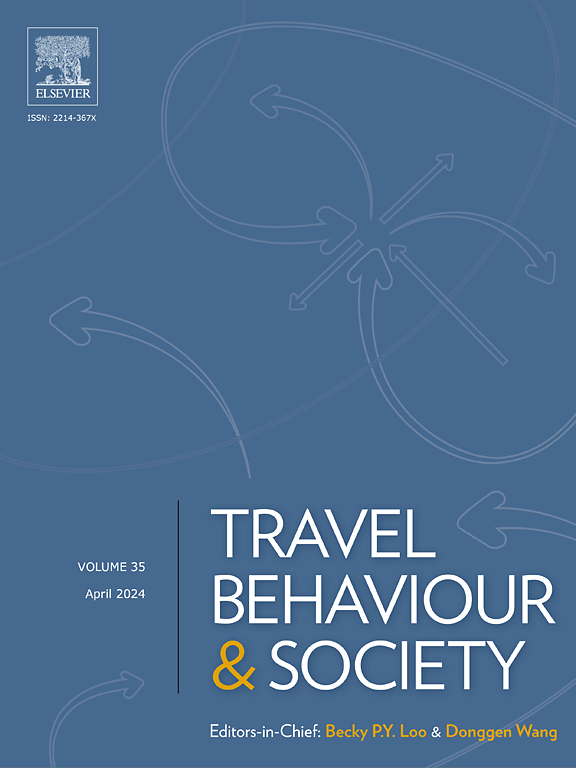What street view imagery features favour driving? A copula model for driver distraction and driving performance
IF 5.1
2区 工程技术
Q1 TRANSPORTATION
引用次数: 0
Abstract
Urban landscape plays a crucial role in reshaping the activity and mobility pattern of citizens. Studies have explored the relationships between the built environment, socio-economic, transport infrastructure, travel behaviour, and quality of life at different spatial scales. However, associations between the built environment, driver distraction, and driving performance at the micro-level are less studied. In this study, influences of different visual objects from drivers’ view and other possible factors on driver distraction and speed variation are investigated. Based on the street view imagery and image segmentation technique, proportions of visible objects including vegetation and road furniture within driver perspective can be estimated. Furthermore, vehicle kinematics in terms of longitudinal speed, longitudinal acceleration, and lateral acceleration can be measured from vehicle trajectory data. The Gaussian distributed copula model is used to jointly model the ratio of driver distraction and speed standard deviation. Results indicate that proportions of road, sky, and buildings in the drivers’ view significantly affect driver distraction ratio. In addition, speed standard deviation is associated with driver distraction ratio, proportions of sky and buildings, vehicle longitudinal and lateral acceleration, and driver age. Findings should shed light on enhancing urban design and planning by considering the effects of built environment attributes and drivers’ visual environment.
哪些街景图像特征有利于驾驶?驾驶员分心与驾驶行为的联结模型
城市景观在重塑市民的活动和流动模式方面发挥着至关重要的作用。研究探索了不同空间尺度下建筑环境、社会经济、交通基础设施、旅行行为和生活质量之间的关系。然而,在微观层面上,建筑环境、驾驶员分心和驾驶表现之间的关系研究较少。本研究考察了驾驶员视角中不同视觉对象及其他可能因素对驾驶员分心和速度变化的影响。基于街景图像和图像分割技术,可以估计驾驶员视角内包括植被和道路家具在内的可见物体的比例。此外,车辆运动学的纵向速度,纵向加速度和横向加速度可以测量从车辆的轨迹数据。采用高斯分布联结模型对驾驶员分心与车速标准差的比值进行联合建模。结果表明,道路、天空和建筑物在驾驶员视野中的比例显著影响驾驶员分心率。此外,车速标准差与驾驶员分心率、天空与建筑物的比例、车辆纵向和横向加速度以及驾驶员年龄有关。研究结果应有助于通过考虑建筑环境属性和驾驶员视觉环境的影响来加强城市设计和规划。
本文章由计算机程序翻译,如有差异,请以英文原文为准。
求助全文
约1分钟内获得全文
求助全文
来源期刊

Travel Behaviour and Society
TRANSPORTATION-
CiteScore
9.80
自引率
7.70%
发文量
109
期刊介绍:
Travel Behaviour and Society is an interdisciplinary journal publishing high-quality original papers which report leading edge research in theories, methodologies and applications concerning transportation issues and challenges which involve the social and spatial dimensions. In particular, it provides a discussion forum for major research in travel behaviour, transportation infrastructure, transportation and environmental issues, mobility and social sustainability, transportation geographic information systems (TGIS), transportation and quality of life, transportation data collection and analysis, etc.
 求助内容:
求助内容: 应助结果提醒方式:
应助结果提醒方式:


